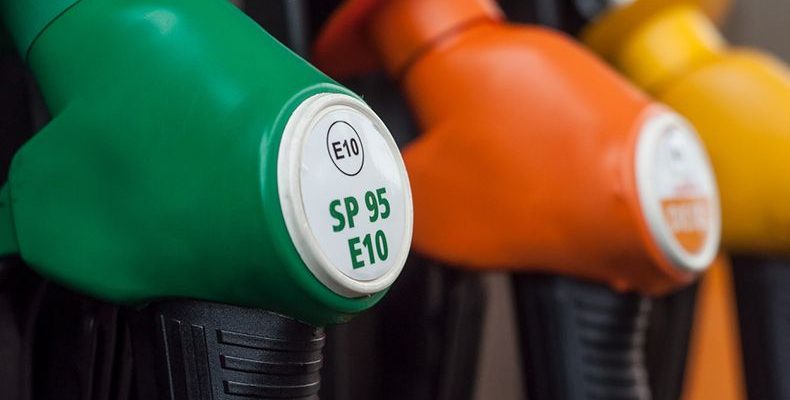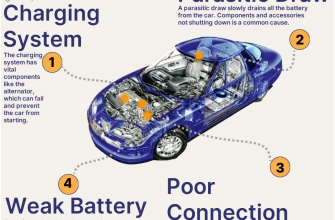In the world of automotive fuel, unleaded gas has become the standard. Yet, many drivers still have questions about what it is, how it works, and its implications for vehicle performance and the environment. This comprehensive guide aims to demystify unleaded gas, shedding light on its benefits, types, and the science behind it.
- What is Unleaded Gas?
- The Chemistry Behind Unleaded Gas
- Types of Unleaded Gasoline
- Benefits of Using Unleaded Gas
- How to Choose the Right Fuel for Your Vehicle
- Unleaded Gas and the Environment
- Emerging Technologies in Fuel Refinement
- Biofuels: The Next Frontier
- Electric Vehicles and the Shift in Fuel Dynamics
- Consumer Awareness and Eco-Friendly Choices
- Government Regulations and Their Impact
- The Road Ahead: Challenges and Opportunities
- Understanding Octane Ratings
- The Economic Impact of Unleaded Gas
- Consumer Choices and Fuel Efficiency
- Environmental Considerations
- Looking Ahead: The Future of Unleaded Gas
What is Unleaded Gas?
Unleaded gasoline is a type of fuel used in internal combustion engines that does not contain lead additives. Historically, lead was used in gasoline to improve engine performance and reduce knocking. However, due to the severe environmental and health impacts of lead, its use was phased out in the 1970s. Today, unleaded gas is the norm, providing a cleaner alternative that meets stringent environmental regulations;
The Chemistry Behind Unleaded Gas
Unleaded gasoline is primarily composed of hydrocarbons, which are derived from crude oil. The refining process separates the crude oil into various components, allowing for the production of different fuel types, including unleaded gas. Additives are included to enhance performance, improve combustion efficiency, and minimize engine deposits. Common additives include:
- Detergents: Help keep fuel injectors clean.
- Antioxidants: Prevent fuel degradation over time.
- Octane boosters: Improve resistance to knocking, ensuring smoother engine operation.
Types of Unleaded Gasoline
Unleaded gasoline comes in several different octane ratings, which indicate the fuel’s ability to resist knocking during combustion. The most common types include:
- Regular Unleaded (87 octane): The most widely used fuel, suitable for most vehicles.
- Mid-Grade Unleaded (89 octane): Offers a balance between performance and cost, recommended for specific engines.
- Premium Unleaded (91-94 octane): Designed for high-performance vehicles, providing optimal performance and efficiency.
Benefits of Using Unleaded Gas
Switching to unleaded gas offers several advantages:
- Environmental Impact: Reduced lead emissions contribute to cleaner air and a healthier environment.
- Engine Health: The absence of lead prevents harmful deposits from forming in the engine, promoting longevity and performance.
- Performance: Modern engines are designed to operate efficiently on unleaded gas, maximizing fuel economy and power output.
How to Choose the Right Fuel for Your Vehicle
Choosing the right type of unleaded gas is crucial for maintaining your vehicle’s performance. Here are some tips:
- Check your owner’s manual for the manufacturer’s recommended octane rating.
- Consider your driving habits; high-performance driving may require premium unleaded gas.
- Evaluate fuel quality; choose reputable gas stations that offer fresh, high-quality fuel.
Unleaded Gas and the Environment
One of the most significant advantages of unleaded gas is its reduced environmental impact. The removal of lead from gasoline has led to a dramatic decline in lead-related health issues. Additionally, the evolution of unleaded fuels has spurred the development of cleaner alternatives, such as ethanol blends and electric vehicles, further reducing our carbon footprint.
Understanding unleaded gas is essential for every driver. By knowing what it is, its benefits, and how to choose the right type for your vehicle, you can contribute to a healthier environment while ensuring optimal performance for your car. As the automotive landscape continues to evolve, staying informed about fuel options will empower you to make better choices on the road.
This article provides a detailed overview of unleaded gas, its components, types, benefits, and its role in environmental sustainability. Each section is structured to facilitate easy navigation and comprehension, ensuring readers can grasp the essential information about unleaded gasoline.
As we stand on the precipice of a new era in automotive fuel, the evolution of unleaded gas is not just a matter of chemistry and engineering; it’s a narrative woven with innovation, sustainability, and the relentless pursuit of efficiency. In this section, we will delve into the latest advancements and emerging trends shaping the future of unleaded gasoline.
Emerging Technologies in Fuel Refinement
The refining process for unleaded gas has seen significant innovations aimed at increasing efficiency and reducing environmental impact. Advanced catalytic cracking techniques are now being employed to convert crude oil into more valuable products, including high-octane gasoline. Furthermore, the integration of machine learning and AI in refineries is optimizing operations, allowing for better yield predictions and energy consumption reductions.
Biofuels: The Next Frontier
In the quest for sustainability, biofuels are becoming an increasingly popular alternative to traditional unleaded gasoline. Ethanol, derived from corn and sugarcane, is often blended with unleaded gas to enhance octane ratings while reducing greenhouse gas emissions. Innovations in second-generation biofuels, sourced from non-food biomass, are poised to revolutionize the fuel market, providing cleaner options without competing with food supplies.
Electric Vehicles and the Shift in Fuel Dynamics
As electric vehicles (EVs) gain traction, the landscape of fuel consumption is undergoing a seismic shift. While unleaded gas remains essential for traditional combustion engines, the rise of EVs is pushing for advancements in fuel alternatives. The automotive industry is focusing on hybrid technologies that combine gasoline engines with electric motors, optimizing fuel efficiency and reducing emissions. This hybridization is a bridge to a future where unleaded gas may coexist with electric propulsion systems, catering to diverse consumer needs.
Consumer Awareness and Eco-Friendly Choices
Today’s consumers are more informed and environmentally conscious than ever. There’s a growing demand for transparency in fuel production processes and the environmental impact of gasoline choices. Brands are responding by highlighting their commitment to sustainability, such as sourcing fuel from environmentally friendly refineries and supporting initiatives that promote cleaner air. Consumers are encouraged to ask questions and seek out fuels that align with their values.
Government Regulations and Their Impact
Government regulations play a crucial role in shaping the future of unleaded gas. Stricter emissions standards are prompting refineries to innovate continuously, ensuring that the gasoline produced meets evolving environmental requirements. Policies promoting alternative energy sources and renewable fuels are also influencing market dynamics, encouraging investment in cleaner technologies and research.
The Road Ahead: Challenges and Opportunities
While the future of unleaded gas is filled with potential, it is not without challenges. The volatility of oil markets, the need for infrastructure adaptation, and the ongoing competition with alternative fuels create a complex landscape for producers and consumers alike. However, these challenges present opportunities for innovation and collaboration within the industry, paving the way for a more sustainable fuel future.
The journey of unleaded gas is one of adaptation and evolution. As we explore new technologies, embrace biofuels, and respond to consumer demands, the future of unleaded gasoline is set to be as dynamic as the vehicles it fuels. By staying informed and making conscious choices, consumers can play a pivotal role in shaping this future, ensuring that unleaded gas remains a viable and environmentally responsible option on the road ahead.
In essence, understanding unleaded gas today goes beyond mere chemistry; it encompasses a broader narrative of environmental responsibility, technological innovation, and consumer empowerment. This knowledge will not only enhance driving experiences but also contribute to a cleaner, more sustainable planet.
As we delve deeper into the world of unleaded gas, it becomes clear that this vital resource is not merely a means of powering vehicles; it is a multifaceted topic that intertwines technology, environmental responsibility, and consumer choices. Understanding the intricacies of unleaded gasoline can enhance not only your driving experience but also your contribution to a sustainable future.
At its core, unleaded gasoline is a complex blend of hydrocarbons, specifically designed to optimize combustion in modern engines. Additives are included to enhance performance, prevent knocking, and protect engine components. The primary components of unleaded gas include:
- Aliphatic hydrocarbons: These compounds provide the octane rating necessary for efficient combustion.
- Aromatics: These enhance the fuel’s energy content and help in stabilizing the combustion process.
- Oxygenates: Such as ethanol, which reduce emissions and improve combustion efficiency.
Understanding Octane Ratings
The octane rating of unleaded gas is a critical factor that indicates its ability to resist knocking during combustion. Higher octane fuels can withstand greater compression before igniting, making them ideal for high-performance engines. Here’s a quick overview of common octane ratings:
- Regular (87 octane): Suitable for standard vehicles and everyday driving.
- Mid-grade (89 octane): Offers a balance for engines with moderate performance needs.
- Premium (91-94 octane): Designed for high-performance vehicles that demand optimal power and efficiency.
The Economic Impact of Unleaded Gas
The price of unleaded gas can fluctuate wildly due to various factors, including crude oil prices, geopolitical events, and seasonal demand. Understanding these dynamics can be beneficial for consumers looking to manage their fuel expenses effectively. Moreover, with the rise of fuel-efficient vehicles and alternative energy sources, the demand for unleaded gas is evolving, impacting economies worldwide.
Consumer Choices and Fuel Efficiency
Choosing the right type of unleaded gas can significantly affect your vehicle’s performance and fuel efficiency. Here are some tips for making informed choices:
- Know your vehicle: Always refer to the manufacturer’s recommendations regarding the appropriate octane level.
- Monitor fuel efficiency: Keeping track of your vehicle’s mileage can help identify any changes in fuel performance.
- Consider fuel additives: Some drivers opt for fuel additives to enhance performance, though it’s essential to choose reputable products.
Environmental Considerations
In an era of heightened environmental awareness, the impact of unleaded gas on air quality and climate change is a pressing concern. While unleaded gas is a cleaner alternative to leaded gasoline, it still emits greenhouse gases. Consequently, there is a growing push for innovations in cleaner fuels, such as electric vehicles and hydrogen fuel cells. Consumers can play their part by choosing fuels with lower emissions and supporting policies that promote renewable energy sources.
Looking Ahead: The Future of Unleaded Gas
The future of unleaded gas is uncertain yet promising. As technology advances, we can expect improvements in fuel efficiency and reductions in harmful emissions. The automotive industry is also exploring alternative fuels and hybrid technologies that can work in tandem with unleaded gas, offering consumers a broader range of options. Staying informed about these developments will empower consumers to make choices that align with their values and driving needs.
So the next time you pull into a gas station, remember that you’re not just fueling your vehicle; you’re participating in a larger narrative of innovation and progress that shapes our roads and our planet.










I learned so much about unleaded gasoline from this guide! The breakdown of types and their octane ratings was especially helpful for choosing fuel for my car.
I never knew how important the additives in unleaded gas were for engine performance. This guide really opened my eyes to what’s in my fuel!
Excellent overview of unleaded gasoline! It answered all my questions about its composition and environmental impact. Highly recommend this read!
Fantastic article! The chemistry behind unleaded gas was fascinating, and I love that it emphasizes environmental benefits. Very informative!
This guide is a must-read for anyone who drives. It demystifies unleaded gas and highlights its importance in modern vehicles. Great job!
This article provides a clear and concise explanation of unleaded gas. I appreciate the historical context and the benefits outlined. Great read!
A well-written article that simplifies a complex topic. The section on different octane ratings was particularly useful for understanding what to use in my vehicle.
I appreciate the detailed information on the benefits of using unleaded gas over leaded alternatives. It